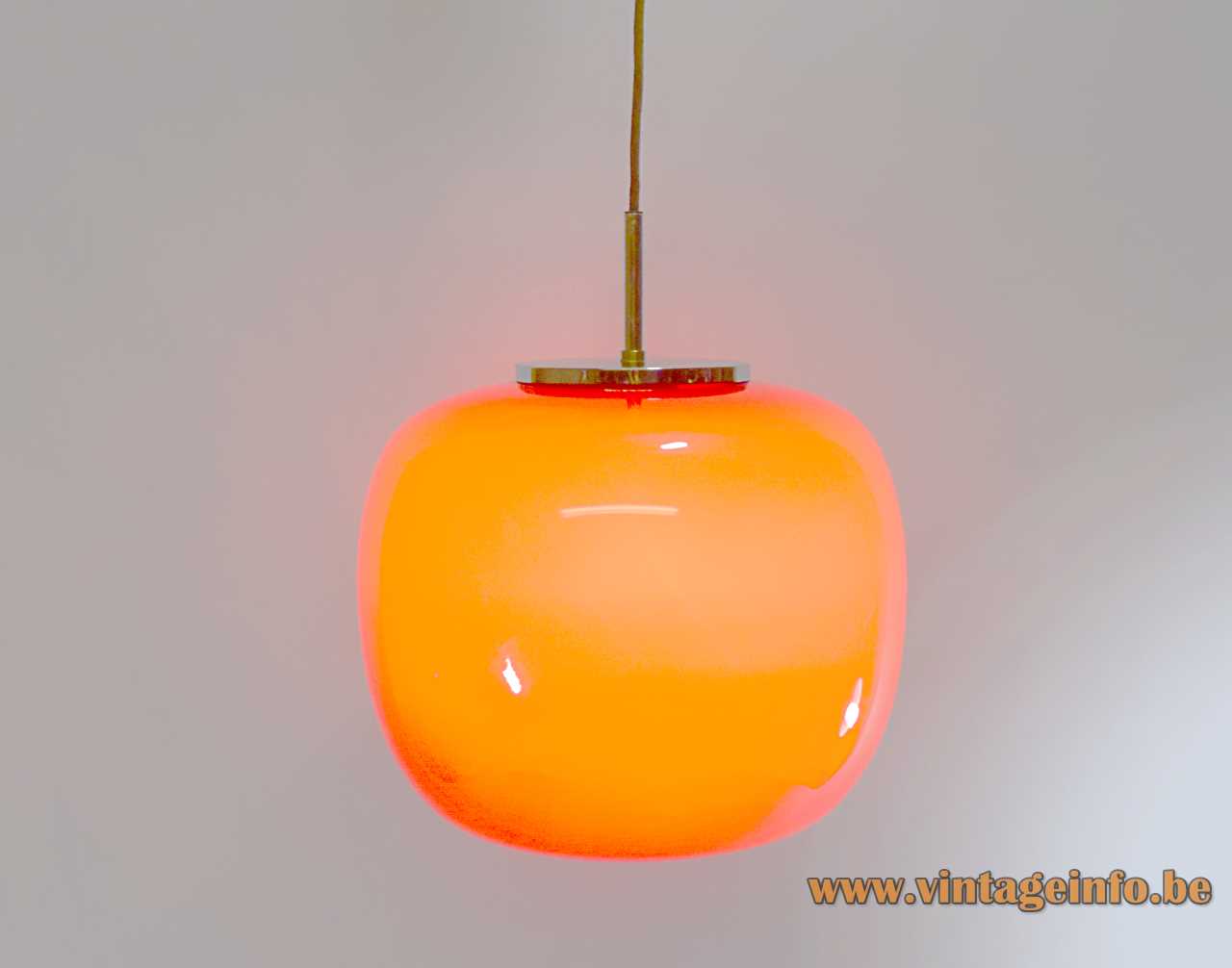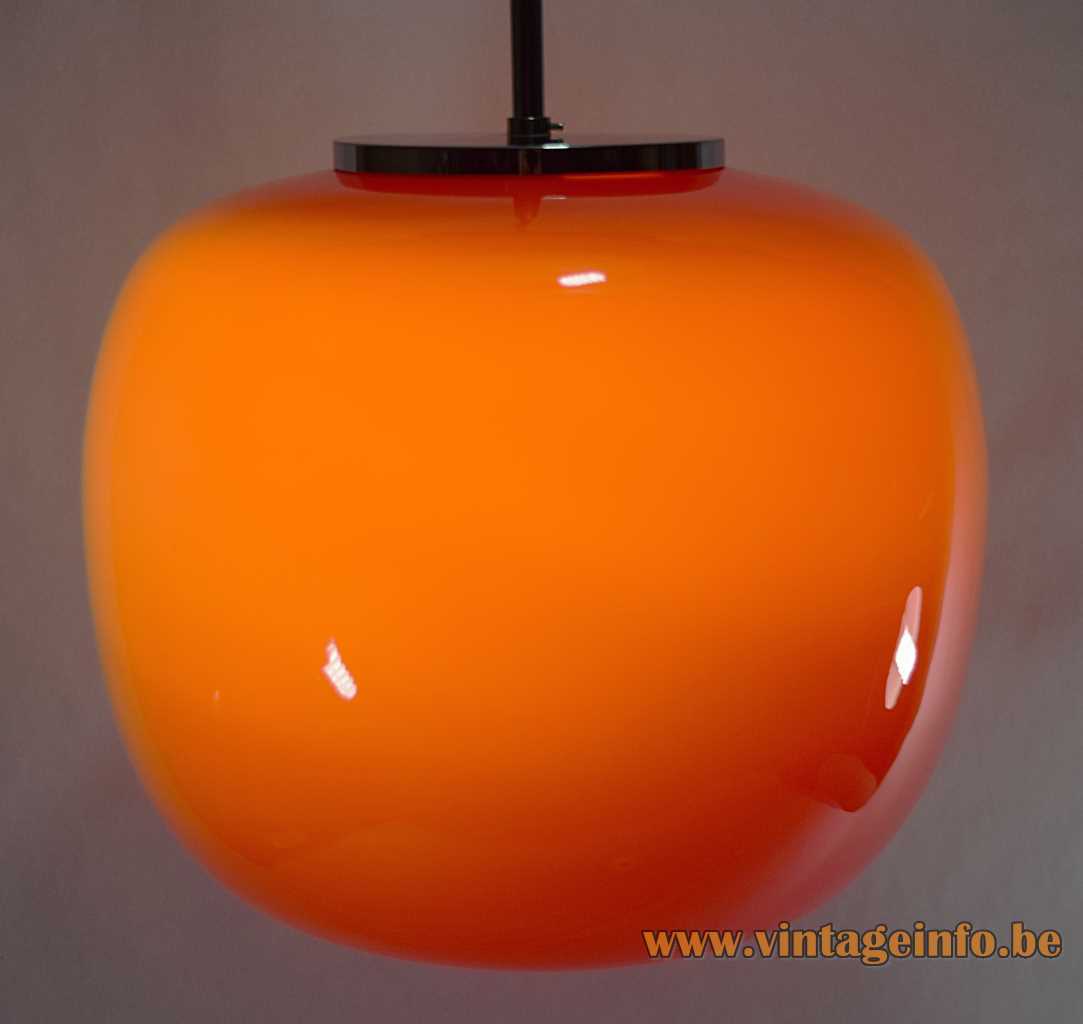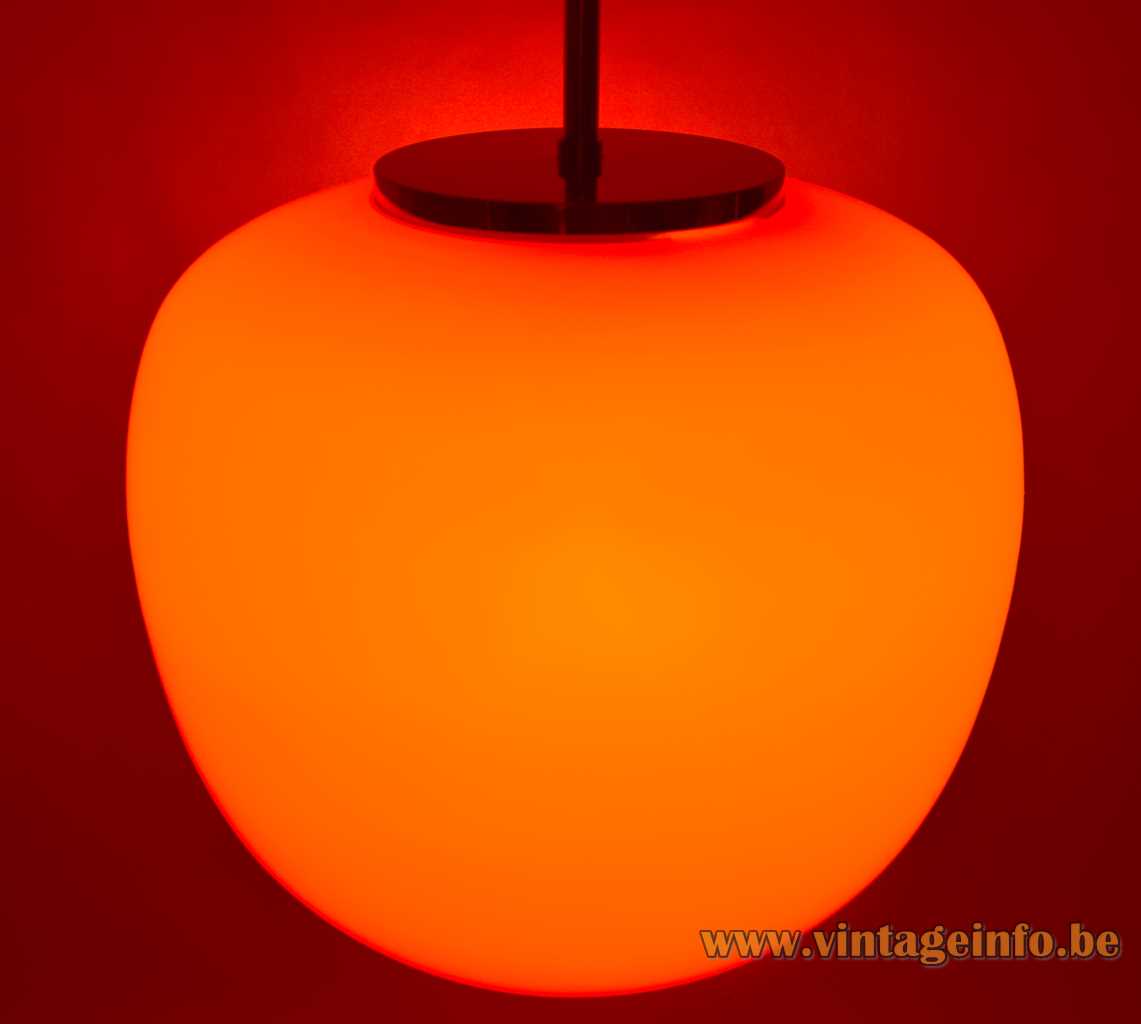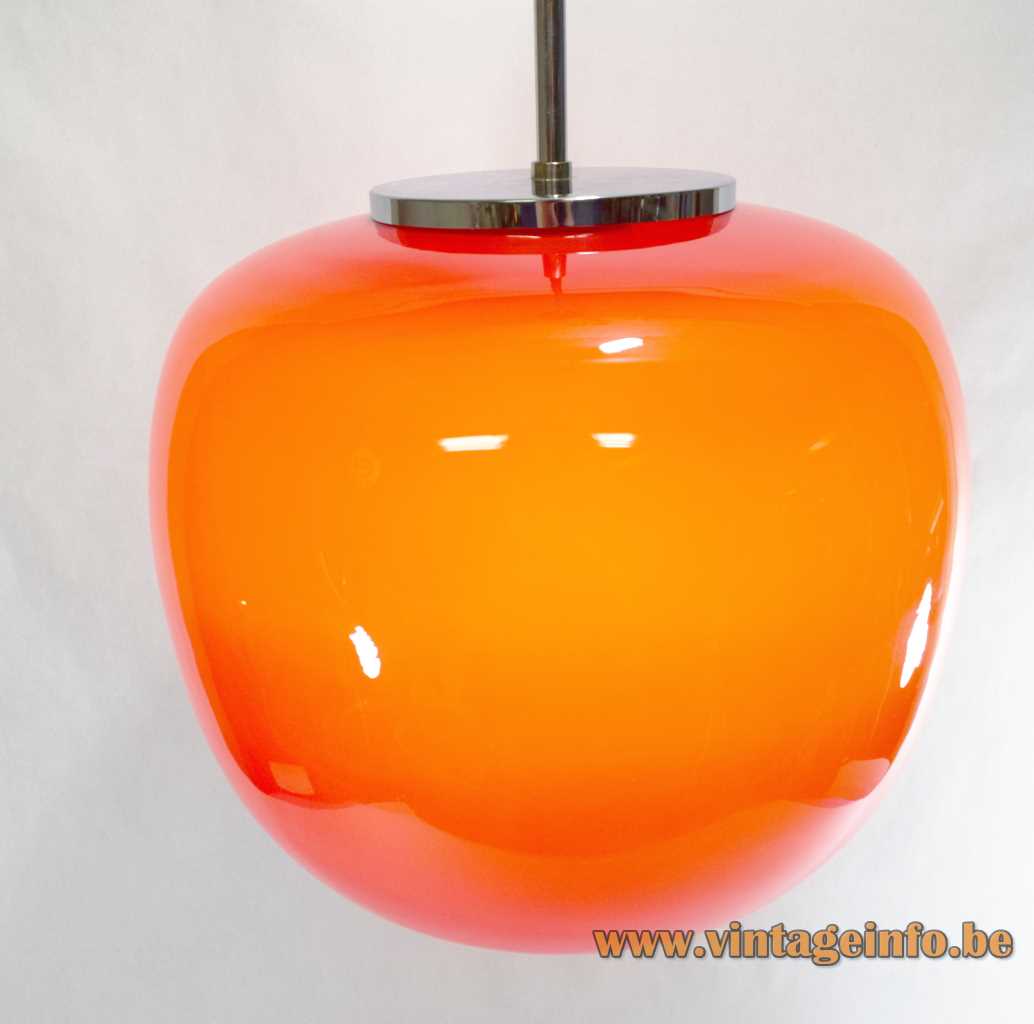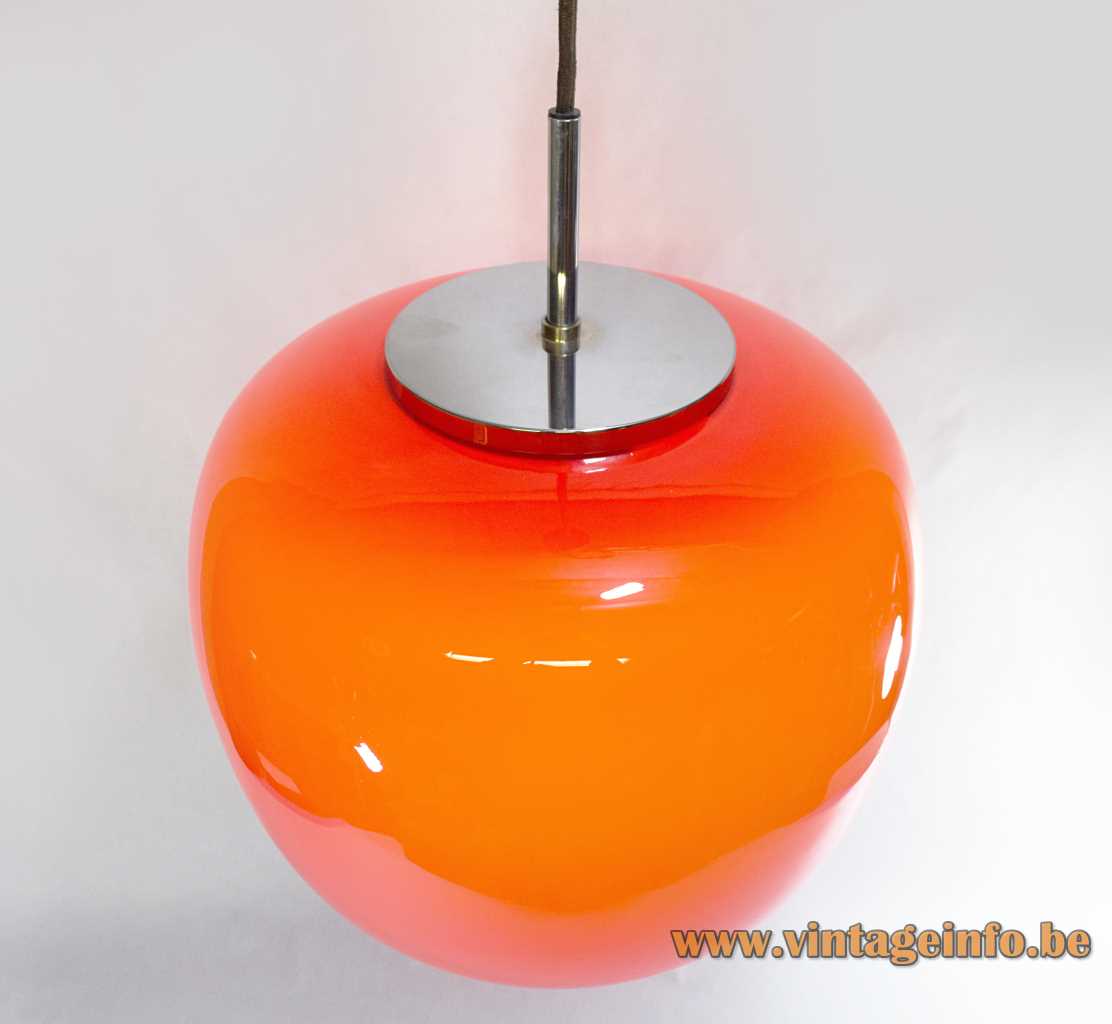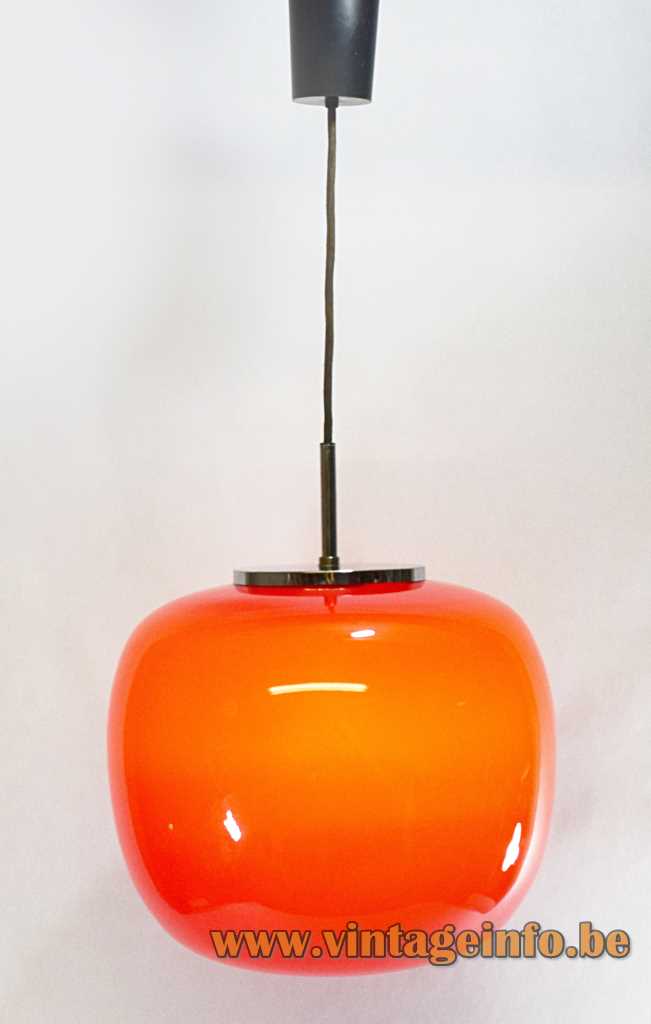Hustadt-Leuchten Glass Pendant Lamp
Materials: Dark orange, red crystal hand blown glass globe in an apple shape. The inside is white (incamiciato). Chromed metal (iron) lid, rod and parts. Metal and porcelain socket.
Cord Length: 80 cm / 31.49’’
Height: 30 cm / 11.81”
Width: ∅ 34 cm / 13.38”
Electricity: 1 bulb E27, 1 x 100 watt maximum, 110/220 volt.
Any type of light bulb can be used, but preferably a white/opaque bulb. Clear bulbs creates stripes on the glass and therefore also on the walls.
Period: 1960s, 1970s – Mid-Century Modern.
Designer: To be appraised.
Manufacturer: Hustadt-Leuchten, Neheim-Hüsten (Arnsberg), Germany.
Other versions: This Hustadt-Leuchten glass pendant lamp exists in several colours.
Hustadt-Leuchten
Hustadt-Leuchten was founded in September 1962 as Walter Hustadt GmbH & Co. KG Leuchten. Not much is know about it. The company officially ended business in may 2014. It went bankrupt some 5 years before.
Hustadt-Leuchten always produced high quality lamps. You can find a few lamps on this website. The company received several design awards.
One of the most well known designers for Hustadt-Leuchten was Klaus Hempel, who also designed lamps for the famous Gebr. Kaiser & Co. Leuchten company, also from Germany.
The company produced beautiful lamps in high quality and the best materials. The glass for this lamp is probably made by Peill + Putzler, another German light factory that made glass for many other companies.
Some sources say that it is made by AV Mazzega (today named Mazzega 1946) from the Murano island in Italy. In any case, it is high quality glass.
Incamiciato: overlay lattimo glass (= milky looking glass) with a layer of transparent coloured glass. The technique was invented in Murano, Italy, hence the Italian name.
Hustadt
Hustadt is also a small German town that was build in the late 1960s as a model neighbourhood according to the general urban standards, to fulfil the requirements for approximately 6000 inhabitants. The town is build on the edge of the city of Bochum. It’s surrounded by woods and fields on the one side, and offshoots of the enormous campus of the Ruhr University, as well as other housing areas on the other side.
Links (external links open in a new window)
Vintageinfo
Crackle glass globes cascade chandelier
